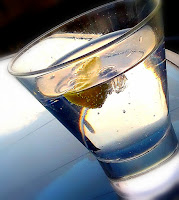Foodie 'membrances

This weekend, my private dining society met to enjoy Mexican food. The date had been chosen for its proximity to el Dia de los Muertos, the Mexican celebration in remembrance of lost family, friends and admired figures from history. The Day of the Dead is a deeply significant occasion for Mexicans. While Europeans and Americans might celebrate Hallowe’en as a carnival holiday for games and fancy dress, Day of the Dead is both culturally and spiritually profound. Originating in pre-Christian beliefs, the celebration marks the moment the dead may return to the land of the living for a while. In order to persuade them to come, offerings of foods and lively music were provided. With the arrival of Christianity, the celebrations were augmented and embellished with themes from the November feasts of All Saints and All Souls; the prayers for deceased family and recognition of holiness being blended with ancestor-worship in a lively celebration of the people we have loved and lost, and their c





